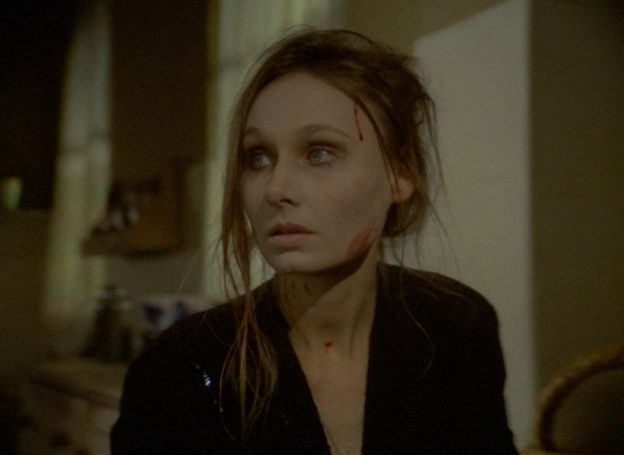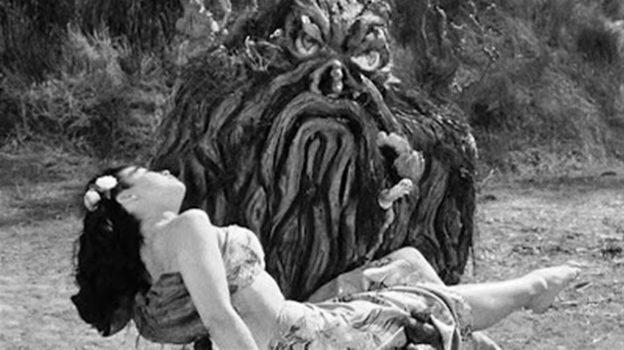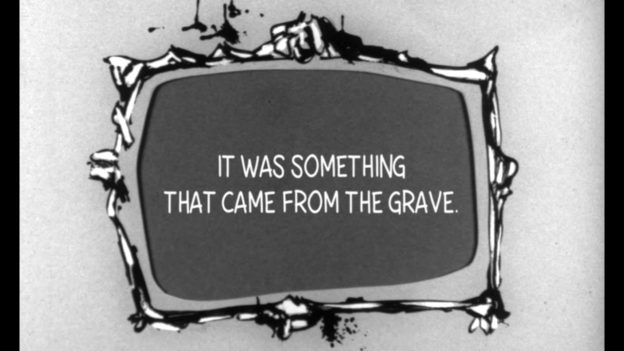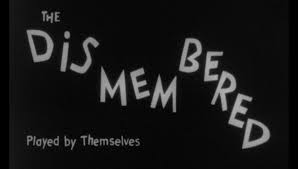31+ Days of Horror. 33 Horror Movies. 33 Reviews.
View my ’17 Cinema Shame/Hooptober Shame-a-thon Statement
Nature of Shame:
Unwatched Mondo Macabro Blu
I’d never seen a film by Jose Ramon Larraz.
Hoop-tober Challenge Checklist:
Decade: 1970’s
Country of origin: UK
#15. Symptoms (1974)
 Preconceptions can be damning. Especially, I think, when it comes to horror filmmakers. For example, I toss around the term “schlock” too cavalierly, and I’m quite sure most people misunderstand the affection I have for films falling under this umbrella.
Preconceptions can be damning. Especially, I think, when it comes to horror filmmakers. For example, I toss around the term “schlock” too cavalierly, and I’m quite sure most people misunderstand the affection I have for films falling under this umbrella.
After the Cinema Shame podcast I just released about Friday the 13th, I noticed that I used the terms “schlock” and “trash” to describe a certain genre of European filmmakers that indulge their baser instincts, mingling sex and bloodletting as if the two were inseparable parts of the same whole. These are not the correct usages of the terms, but I’ve come to use them both as shorthand.
Somewhere along the way “schlock” and “trash” became more prominent in my own lexicon. Shame on me. Words have meanings. Irony and certain twists of phrase are understood by those familiar with our tastes — not casual conversationalists.
Maybe a review of Jose Ramon Larraz’s brilliant Symptoms isn’t the place for soul searching about the way we present and interpret film criticism. Then again, I had prejudged Larraz based on the way other people used those very same terms to describe his work. It’s a commentary on how easy it is to misappropriate these blank and banal verbal shortcuts and how dangerous they can be when used unconsciously.
in my defense, however, I’d read plenty of discussion that superficially linked José Ramón Larraz with Jesus Franco, and while I hold great affection for a few of Franco’s films, a great auteur Franco was not. I made the shortsighted assessment that I did not need another “Jesus Franco” in my life, and therefore, Larraz waited on the sidelines until I finally uncorked this beautiful Mondo Macabro Blu-ray.

The Story
A young woman, Anne, is invited by Helen (Angela Pleasance) to stay at her English country mansion. She encounters a repulsive male-gaze creeper outside the estate and the increasingly off-kilter and fragile disposition of her host. Any further narrative detail would overburden Symptoms‘ efficient slow-burn efficacy and betray the final revelation.
Much to my surprise (and counter to Larraz’s well-documented reputation), Symptoms‘ pacing belongs to the realm of gothic horror. The film most obviously recalls Roman Polanski’s Repulsion (1965), but further scrutiny reveals flavors of Hitchcock. A heaping tablespoon of Psycho (1960) and a dash of Rebecca (1940). One particular scene might even rekindle memories of The Innocents (1961).

Mood and tone dominate the film. Suspense lies in the anticipation, the constant sense that something — you don’t know what — will divert the film’s narrative at any moment. Larraz patiently invokes multiple sources of voyeurism, and John Scott’s score perfectly complements the camera’s study of the voyeurs’ uneasy objects of obsession.
The primary object, Helen (Donald Pleasance’s daughter, by the way) graces the screen with a porcelain countenance undermined by a tremor of madness. Despite her frail, vulnerable beauty, the viewer comprehends something terrifying within. Liken her to Norman Bates, Anthony Perkins’ boyish everyman. Norman differs because he projects his crimes onto another and that act of projection ameliorates the transgression behind the placid exterior. In the role Angela Pleasance is mesmerizing.
As an uncertain testament to the artistic value of the film, the British film board submitted Symptoms as the UK’s official Cannes entry in 1974. Produced in England, but directed by the Catalonian Larraz and funded by the Belgian Jean Dupuis, the international flavor of the production may have made it an unusual choice. (Fun fact: Smurf money paid for Symptoms. Jean Dupuis was heir to the Éditions Dupuis S.A empire — the Belgian publisher responsible for European comics such as The Smurfs and Gaston Lagaffe.)

Final Symptoms Thoughts:
Back in 2010, the BFI placed Symptoms on its short list for most wanted missing British films. Long unavailable on anything but a fuzzy VHS tape, the discovery of a new print in 2014 set in motion the events that brought this Mondo Macabro Blu-ray (and a Region B/2 BFI release) to fruition and hopefully a modern re-evaluation among the great films of 1970’s horror.
The flawless restoration work that appears here would never betray Symptom‘s longstanding status as a so-called “lost film.” José Ramón Larraz’s film not only deserves mention in the same breadth as Polanski’s Repulsion, but it might just be the superior film. Lingering and unsettling psychological terror characterizes Larraz’s masterpiece. “Schlock” this is not.
30Hz Movie Rating:

Availability:
I might require another viewing to unpack this movie, but in the meantime, you’d be well Smurfed to pick up Mondo Macabro‘s pristine Blu-ray release.
2017 Cinema Shame/Hoop-Tober Watchpile Shame-a-thon
#1. Caltiki The Immortal Monster (1959) / #2. The Devil Doll (1936) / #3. The Velvet Vampire (1971) / #4. Mill of the Stone Women (1960) / #5. The Initiation (1984) / #6. Poltergeist (1982) / #7. Night of the Lepus (1972) / #8. The Black Cat (1934) / #9. The Raven (1935) / #10. Friday the 13th (1980) / #11. Friday the 13th Part 2 (1981) / #12. Body Snatcher (1945) / #13. Dismembered (1962) / #14. From Hell It Came (1957) / #15. Symptoms (1974) / #16. Eating Raoul (1982) / #17. Spellcaster (1988) / #18. The Old Dark House (1932) / #19. House (1985) / #20. House II: The Second Story / #21. Christine (1983) / #22. Suspiria (1977) / #23. The Invisible Man (1933) / #24. Spider aka Zirneklis (1991)







 The “Killer Tree” sub-sub-subgenre has deeper roots than you might imagine. Off the top of my head, you’ve got the tree from Evil Dead (1981), The Guardian (1990) starring my muse Ms. Carey Lowell, Day of The Triffids (1962), and a brief segment in Poltergeist (1982). But we’re really just scratching the terra firma of this fertile film forest.
The “Killer Tree” sub-sub-subgenre has deeper roots than you might imagine. Off the top of my head, you’ve got the tree from Evil Dead (1981), The Guardian (1990) starring my muse Ms. Carey Lowell, Day of The Triffids (1962), and a brief segment in Poltergeist (1982). But we’re really just scratching the terra firma of this fertile film forest.







 When the words “lost” and “film” appear together I sign the dotted line. I love the sense of time-capsule re-discovery that goes along with these types of releases, like they’ve just been unearthed and no one on the face of this earth has seen them in 50+ years.
When the words “lost” and “film” appear together I sign the dotted line. I love the sense of time-capsule re-discovery that goes along with these types of releases, like they’ve just been unearthed and no one on the face of this earth has seen them in 50+ years. The Story
The Story

